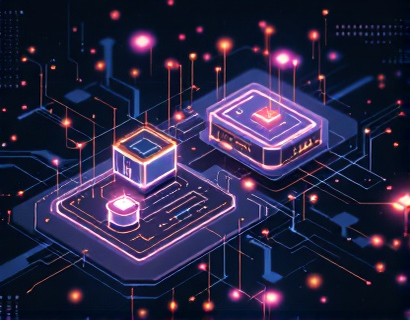Next-Gen Connectivity: Transforming Business and Personal Communication with Advanced Telecom and Internet Solutions
The rapid evolution of telecommunications and internet technologies has revolutionized the way businesses and individuals connect, communicate, and conduct operations in the digital age. This transformation is driven by the deployment of advanced infrastructure and sophisticated software solutions that enhance connectivity and streamline communication. The focus on quality and customer satisfaction ensures that these advancements deliver reliable and efficient access to essential digital services, empowering users to succeed and thrive in an increasingly interconnected world.
Advanced telecommunications infrastructure forms the backbone of modern connectivity. High-speed broadband networks, fiber optic cables, and 5G technology are pivotal in providing the necessary bandwidth and low-latency connections required for seamless communication. Fiber optic networks, with their ability to transmit data at unprecedented speeds, have become essential for businesses that rely on real-time data processing and high-definition video conferencing. The rollout of 5G technology further enhances mobile connectivity, enabling faster data transfer rates and supporting the growth of IoT devices, autonomous vehicles, and smart cities.
Software solutions play a crucial role in complementing the physical infrastructure. Advanced network management tools, security protocols, and cloud-based services ensure that connectivity is not only fast but also secure and scalable. For businesses, specialized software can optimize network performance, reduce downtime, and enhance user productivity. For individuals, user-friendly applications and services make it easier to stay connected, access information, and engage with others across the globe.
The integration of artificial intelligence and machine learning into telecom and internet services is another significant advancement. AI-driven analytics can predict network congestion, optimize resource allocation, and proactively address potential issues before they impact users. Machine learning algorithms can personalize user experiences, offering tailored content and services based on individual preferences and behavior. These technologies not only improve the efficiency of networks but also enhance the overall user experience, making digital services more intuitive and accessible.
For businesses, the impact of advanced connectivity is profound. Remote work has become a norm, and reliable communication tools are essential for maintaining productivity and collaboration. Video conferencing platforms, instant messaging apps, and project management software have transformed the way teams work together, breaking down geographical barriers and fostering global collaboration. Cloud computing services allow businesses to scale their operations seamlessly, store data securely, and access powerful computing resources on demand. This flexibility is crucial for companies looking to adapt to market changes and innovate continuously.
In the realm of customer service, advanced connectivity solutions enable businesses to provide exceptional support and engagement. Real-time chatbots and virtual assistants can handle a high volume of customer inquiries efficiently, reducing response times and freeing up human agents to focus on more complex issues. Data analytics tools help businesses gain insights into customer behavior, preferences, and feedback, allowing for more targeted and effective marketing strategies. Enhanced connectivity ensures that these tools are always available and perform optimally, contributing to higher customer satisfaction and loyalty.
For individuals, the benefits of advanced connectivity are equally significant. Access to high-speed internet is no longer a luxury but a necessity for education, entertainment, and daily life. Online learning platforms offer flexible and accessible educational resources, enabling people to acquire new skills and knowledge from anywhere in the world. Streaming services provide entertainment options that cater to diverse tastes and preferences, while social media platforms facilitate connections and community building. The internet has become an indispensable tool for staying informed, networking, and participating in the global digital economy.
The deployment of advanced digital infrastructure also addresses the digital divide, a critical issue that has long hindered equitable access to technology. Efforts to expand broadband coverage to underserved and rural areas ensure that more people can benefit from the opportunities provided by the digital world. Initiatives to provide affordable internet plans and digital literacy programs further support this goal, helping to bridge the gap between different socioeconomic groups. As connectivity improves, the potential for economic growth, social inclusion, and innovation increases, contributing to a more connected and prosperous society.
Security remains a paramount concern in the realm of advanced telecommunications and internet services. With the increasing reliance on digital platforms, the risk of cyber threats and data breaches has grown. Advanced security protocols, such as encryption, multi-factor authentication, and intrusion detection systems, are essential to protect sensitive information and maintain user trust. Regular updates and patches to software and firmware help mitigate vulnerabilities and ensure that networks remain secure against emerging threats. Educating users about best practices for online safety is also crucial in fostering a secure digital environment.
The environmental impact of telecommunications infrastructure is another area of growing importance. As the demand for data transmission increases, so does the energy consumption of data centers and network equipment. Telecom companies are adopting sustainable practices, such as using renewable energy sources, optimizing network efficiency, and designing eco-friendly hardware. These efforts not only reduce the carbon footprint of digital services but also contribute to a more sustainable future. The industry's commitment to green technology is essential for balancing the benefits of connectivity with environmental responsibility.
Looking ahead, the future of connectivity holds even more promise. The development of 6G technology is on the horizon, promising even faster speeds, lower latency, and greater capacity. This next generation of wireless communication will support the growing number of connected devices and enable new applications in areas such as augmented reality, virtual reality, and smart cities. The integration of quantum communication technologies could revolutionize data security, offering virtually unbreakable encryption methods. These advancements will continue to drive innovation and enhance the capabilities of telecommunications and internet services, further transforming business and personal communication.
In conclusion, the evolution of telecommunications and internet services through advanced infrastructure and software solutions is reshaping the way we connect and communicate. The focus on quality, security, and user experience ensures that these advancements deliver tangible benefits to businesses and individuals alike. As connectivity continues to improve, the potential for growth, collaboration, and innovation expands, paving the way for a more connected and dynamic world.










































